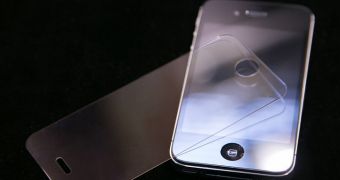Corning, the makers of Gorilla Glass, aren’t convinced that sapphire is the right way to go for Apple. Speaking at the Morgan Stanley Technology, Media & Telecom Conference, one of the company’s executives slammed the material, calling it a bad choice from a number of viewpoints.
Apple is known to have enlisted the services of a company called GT Advanced to make huge amounts of sapphire crystal/glass for an upcoming product, or even more than one product.
One of those is believed to be the iPhone 6, a bigger version of the flagship Apple smartphone that is said to sport a larger display and a redesigned body. The Cupertino giant is seemingly on track to replace Gorilla Glass (the material currently used for the front glass panel of every iPhone) with sapphire. The move is a bad one, says Corning.
Speaking at the Morgan Stanley Technology, Media & Telecom Conference, Tony Tripeny, principal accounting officer, senior vice president, corporate controller, is quoted as saying, “When we look at it, we see a lot of disadvantages of Sapphire versus Gorilla Glass.”
“It’s about 10 times more expensive,” Tripeny continued. “It’s about 1.6 times heavier. It’s environmentally unfriendly. It takes about 100 times more energy to generate a Sapphire crystal than it does glass. It transmits less light which it means either dimmer devices or shorter battery life. It continues to break.”
That’s a total of six major downsides to using sapphire, according to Tripeny. So why is Apple still pursuing the use of this material? Well, there’s at least a couple of scenarios we can consider.
The first and most plausible one is that Apple and Corning have had a downfall. Maybe something went wrong in their last meeting establishing the price-per-square inch, or whatever metrics they use to assess the costs.
Another, equally plausible answer is that Corning wants to shift the industry’s attention away from sapphire to continue to land deals to supply its own Gorilla Glass.
In fact, the same Tripeny makes a great case for his company’s high-strength material. Comparing sapphire to Gorilla Glass, he said, “I think while it’s scratch resistant product it still breaks and our testing says that Gorilla Glass, about 2.5 times more pressure that it can take than Sapphire on.”
“So when we look at it, we think from an overall industry and trend that is not attractive in consumer electronics,” Tripeny concluded.

 14 DAY TRIAL //
14 DAY TRIAL //